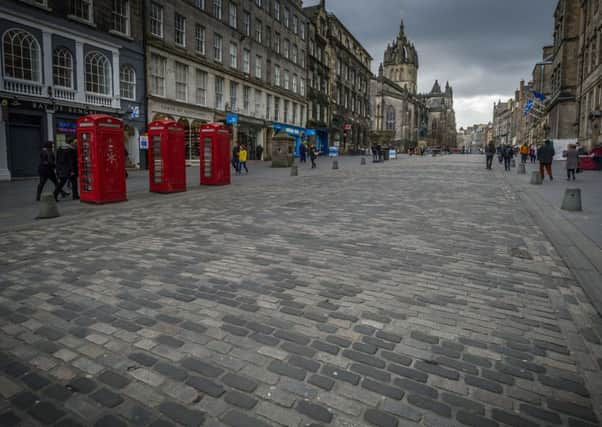Edinburgh's cobbled streets sett for £1m funding boost


Council bosses will carry out a city-wide survey of Edinburgh’s historic setts if new plans get the go-ahead – with hints that a traffic shake-up could follow if cars are shown to be putting too much pressure on roads.
And officials have also pledged to boost the “in-house maintenance skills” of staff in an attempt to improve the quality of repairs, as well as trying to drum up extra funding from Europe.
Advertisement
Hide AdAdvertisement
Hide AdThe latest move comes just two months after councillors voted to resurface Portobello’s Brighton Place with asphalt in an attempt to save £800,000.
Officials had recommended renewing all of the road’s cobbles at a cost of around £1.2m, but a community council survey found a majority of residents wanted them paved over.
Councillor Lesley Hinds, the city’s transport leader, said a comprehensive new study would examine what streets are “suited” to keeping their cobbles – and what streets could work better without.
But she insisted Edinburgh’s setted roads are “very much part of its character”.
Advertisement
Hide AdAdvertisement
Hide AdShe said: “By reviewing their maintenance and management we want to retain the historic and cultural significance of these streets for generations to come.
“By reviewing our best practice we hope to raise awareness of the importance of setted streets while assessing their condition across the city, standardising conservation repairs and building funding resources for their future preservation.”
The council’s £1m cash reserve is the first of its kind to be pumped into addressing the city’s crumbling cobbles, but will still allow only a small number of streets to be renewed each year.
An in-depth report set to go before councillors tomorrow reveals a dedicated council squad had previously been tasked with repairing worn-down setts, before being disbanded in the 1980s.
Advertisement
Hide AdAdvertisement
Hide AdSince then, officials say there has been a lack of consistency in repairs – many of which simply use tarmac infill – as well as a loss in the necessary skills needed to carry them out.
The study recommends a six-part strategy for paving a way forward, including the compilation of an up-to-date street survey. In a bid to learn more about cobbles, council officials even visited Krakow last year to see how the ancient city takes care of its setted roads.
A council spokeswoman said the trip was funded by the Polish Consulate in Edinburgh and the Scottish Polish Cultural Association.
Adam Wilkinson, director of Edinburgh World Heritage – which has assisted the council – said cobbles were “synonymous with Edinburgh”.
Advertisement
Hide AdAdvertisement
Hide AdHe said: “Laying them on a properly engineered road, with minimal gaps, is a fine skill and will result in a street surface that lasts for decades. Setts are a part of what puts us apart from other cities in the UK and Europe. The city’s roads team has the know-how and will but, at present, it does not have the budget.”
Almost five per cent of Edinburgh’s streets are cobbled, with the majority of these laid in the 19th century.